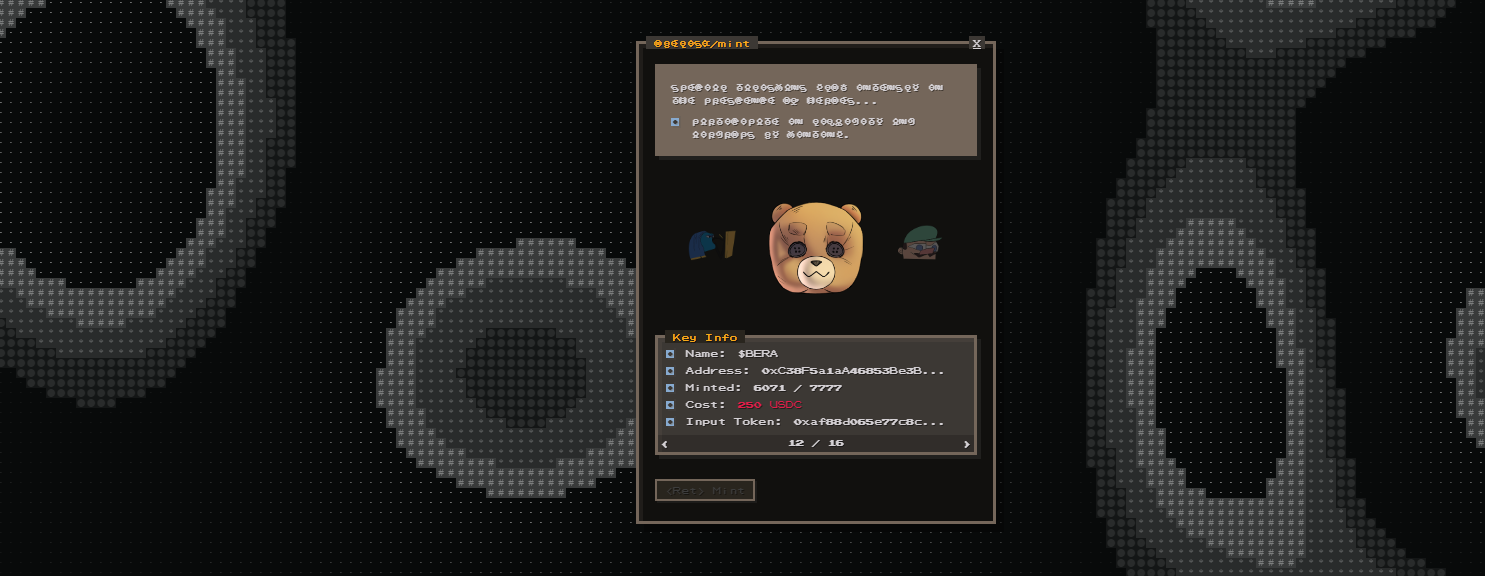Heroglyphs: Decentralizing Ethereum Validation with an Innovative Crypto Protocol

Ethereum stands as a colossus, continually pushing the boundaries of what decentralized technologies can achieve. However, the growing concern of centralization among validators has become a stark contradiction to the core ethos of decentralization that underpins the blockchain industry. This is where the new Ethereum protocol, Heroglyphs, enters the stage, presenting an innovative solution crafted to address these centralization issues head-on.
Heroglyphs.com - The Genesis of Heroglyphs
Heroglyphs is not your typical crypto initiative targeted at the mainstream investor but rather a sophisticated protocol designed for what are termed "Complete Validators." These validators are the linchpins in the Ethereum network, responsible for maintaining its operational continuity and security. The protocol was primarily popularized through activities by notable crypto figures like 0xMaki, who either minted or acquired Heroglyphs through secondary markets.

How Heroglyphs Work
Drawing inspiration from Bitcoin's ordinals and the underutilized "graffiti" in Ethereum blocks, Heroglyphs introduces a method to inscribe new tokens — playfully referred to as "shitcoins" — within these graffiti segments. This process is facilitated through a bespoke encoder/decoder that is exclusively operable by solo validators, thus encouraging more users to run their own validating nodes rather than relying on large, centralized entities.

Validators are incentivized to participate by the prospect of minting unique tokens, which are expected to hold significant value and rarity, akin to elite collectibles. The process to mint these tokens is still being finalized, with possibilities including staking NFTs or participating in a lottery system hosted on the Heroglyphs platform.

Addressing Ethereum's Centralization
One of the critical objectives of Heroglyphs is to combat the centralization risks exacerbated by the popularity of liquid staking solutions. These platforms often result in "economical validators" who stake Ethereum not to secure the network but to earn passive rewards, thereby entrusting their staked ETH to a few dominant protocols. Heroglyphs aims to disrupt this status quo by making it more appealing and profitable to operate as a solo validator, which in turn could enhance the decentralization and resilience of the Ethereum network.
The Impact and Future of Heroglyphs
Heroglyphs propose a system where the power to create and manage new tokens is decentralized among numerous solo validators, thus distributing the influence more evenly across the network. Validators who participate in this scheme do not merely secure the network but also engage in a form of "crypto graffiti," creating valuable tokens that could potentially shift the economic landscape of Ethereum.
Furthermore, the protocol's design includes a mechanism based on the Harberger tax concept where validators lease the rights to use certain token tickers. The value of these tickers is determined by what validators are willing to pay, and they can be outbid, ensuring a dynamic and competitive marketplace.
Heroglyphs stands as a testament to the innovative spirit within the Ethereum community. By leveraging underused aspects of the blockchain and incentivizing increased participation from solo validators, Heroglyphs not only aims to decentralize the validation process but also introduces a novel avenue for token creation that could have far-reaching implications for the blockchain ecosystem. As the protocol continues to evolve, it will be intriguing to see how its impact unfolds, potentially setting a new standard for how blockchains can maintain their foundational principle of decentralization against the odds of increasing centralization.
Heroglyphs.com features a diverse collection of tokens, each associated with specific blockchains, enhancing its eclectic ecosystem:

- Molandak - Monad
- Lueygi - Avalanche
- Porygon - Polygon
- Overpowered - Optimism
- Arbinauts - Arbitrum
- 69 - Mantle
- Onepunch - Linea
- Sanic - Fantom
- Kabosu - Base
- Scribes - Scroll
- Holy3 - Fraxtal
- Gnobby - Gnosis
- Lasagna - Mode
- Bigbang - Blast
- Bera - Berachain

Each token can be minted on the Arbitrum network, with specific costs associated with different tokens, such as $BERA for $250 USDC or MOLANDAK for $500 USDT. For more details on these collections and to engage in minting, visit Heroglyphs.com.
Heroglyphs.com Phase 1 Goes Live with a Special Nod to Scroll Enthusiasts

0xMaki:🧠
I’d recommend Scroll supporters to mint the Scribe NFT we will leverage ambient on Scroll for phase 2-3🧠
Heroglyphs.com has officially launched Phase 1 of its ambitious project. Notably, 0xMaki, a prominent figure in the crypto space, has put forth a strong recommendation for supporters of Scroll to mint the Scribe NFT, designated as $SCRIBES. This move is strategic, as it sets the groundwork for leveraging the Scroll network's ambient capabilities in the upcoming Phases 2 and 3 of the Heroglyphs project. This development hints at enhanced integration and functionality that could significantly impact how value and data interact in these blockchain ecosystems.